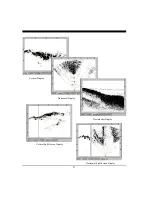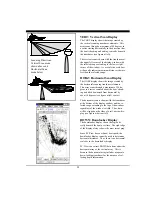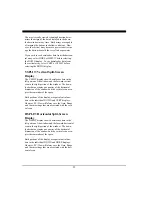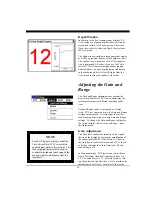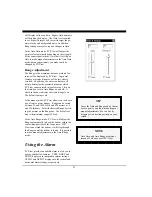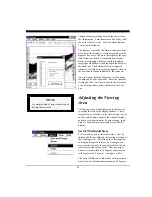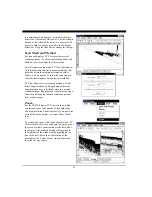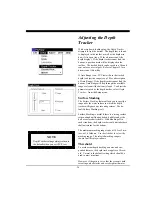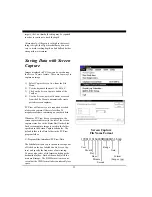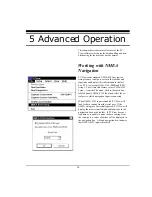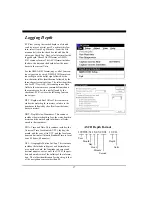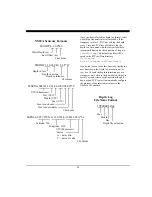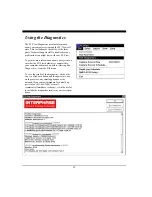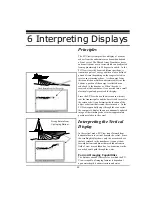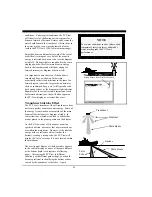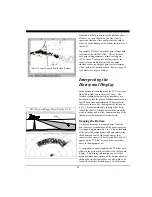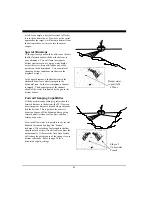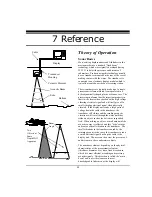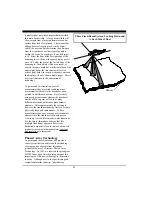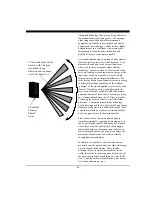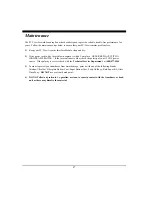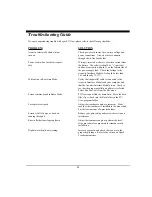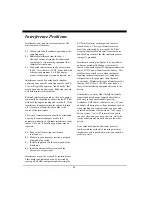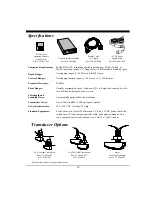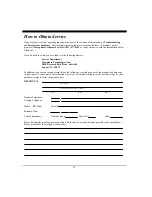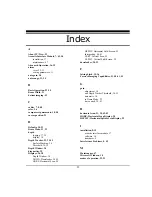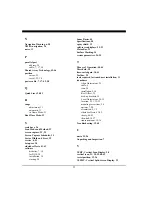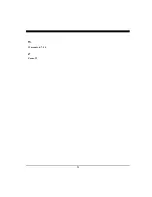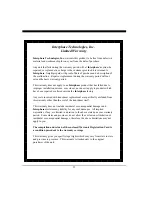
41
conditions. Under typical conditions, the PC/View
will show level or shallowing bottom contours for a
distance forward of between 4-times and 8-times the
water depth beneath the transducer. Obstructions in
the water may be seen at much greater distances
(within the PC/View’s 1200-foot maximum range).
Smooth bottom conditions far forward of the vessel
are difficult to image as very little of the acoustic
energy is reflected back as an echo (see the diagram
at top left). Bottoms that are rough and rocky or are
sloping upward will reflect more acoustic energy
back to the transducer and will show strong far-
forward returns (see diagram at bottom left).
It is important to note that even if the bottom is
smooth and does not show up far-forward,
acoustically reflective obstructions in the same far-
forward region (sea walls, large rocks, underwater
shelves, submerged buoys, etc.) will typically send
back strong echoes, as the diagram at right indicates.
Regardless of the actual vertical dimension of such
far-forward obstructions, they will often appear on
the PC/View display as a vertical line or arc.
Transducer Sidelobe Effect
The PC/View’s transducer, like all transducers, does
not form a perfect beam of acoustic energy. Some of
the energy is contained in areas outside of the main
beam called sidelobes (see diagram at right). In
some situations, sidelobes can lead to echoes that
are not placed in the proper position on the display.
As the PC/View sends off its acoustic beam in a
specific direction, it assumes that any return echoes
are within the main beam. However, if the sidelobe
energy strikes a reflective object (such as the
bottom), creating a strong echo, the PC/View will
display the “false” return as if it were located within
the main beam.
The most typical display of sidelobe echoes appears
in the vertical display as an arc at the same distance
as the bottom depth (see diagram on following
page). After using the PC/View in different
situations, with different gain settings, you should
become proficient in identifying the bottom echoes
caused by the transducer’s sidelobes. A gain
Strong Return from Wall Far-Forward
NOTE
Poor water conditions such as surface chop,
temperature inversion layers and muddy
water may degrade the PC/View’s
performance
Transducer
Sidelobes
Main Beam
False
Echoes
Main Beam
Sidelobe
Summary of Contents for PC/View
Page 1: ...INTERPHASE INTERPHASE PC VIEW for Windows OPERATION MANUAL...
Page 54: ...54 W Warranty 6 7 55 Z Zoom 33...
Page 56: ...56...

